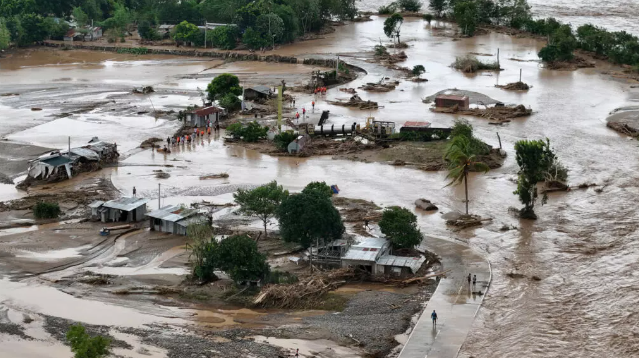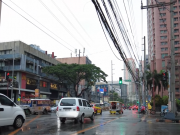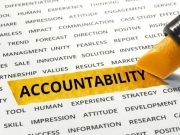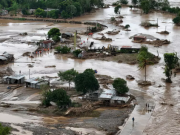Look, let’s just get straight to the painful question, the one that hangs in the air every time the storm signals go up: “Sino ang pinaka-apektado kapag kulang ang proteksyon?”

Who is most affected when protection is lacking?
Honestly? It’s always the most vulnerable communities. You know this. We see it on the news every single year. The pictures are heartbreakingly familiar: people wading through chest-deep, muddy flood waters, carrying their children and their salvaged belongings.
And yes, every single storm also shows the incredible Filipino spirit: neighbors helping neighbors, reaching out across the darkness. But maybe it’s just me, but that doesn’t excuse why they were there in the first place.
This isn’t just about heavy rain; it’s about systemic failures. This post argues that inadequate flood control planning, unchecked real estate development, and failed public works, the things we call ghost projects, leave specific communities exposed, demanding both resilience and rigorous accountability.
We need to follow a simple principle: Protect the vulnerable first. That’s true resilience. And that means katarungan at malasakit, sabay dapat (justice and compassion, together). We can’t have one without the other.
Examining the Hidden Impact
Why Floods Occur
It’s easy to blame the sky. “Oh, it just rained too hard.” But think about it this way: heavy rainfall is a natural factor. The resulting disaster is often a human-made problem.
Sure, natural factors like tropical cyclones and rapid runoff from saturated ground start the process. But we see a total system overload when our infrastructure fails. That’s when the levees failed, or the old drainage systems just gave up because they hadn’t been maintained. And we know they haven’t.
And, of course, human activity plays a massive role. Deforestation and poor land use changes mean the water doesn’t get absorbed naturally. It just rushes, increasing the volume and speed of runoff, constantly exacerbating flood risk for folks downstream.
Defining the Different Kinds of Flood Events
When we talk about floods, we’re not always talking about the same thing. Knowing the difference matters because it affects how we prepare.
- Flash Floods: A flash flood is a terrifying, sudden event. Fast-moving water can cause severe structural damage and carry other debris such as vehicles and trees, posing a significant threat to human life. You’ve got minutes, not hours, to get safe. They are deadly.
- River Flooding: This is when the water level simply exceeds the riverbanks, causing widespread damage in surrounding low-lying areas. Floodwaters can overflow bridges and leave areas flooded for days, causing extensive damage to infrastructure. It’s often slower, but the damage is sustained.
- Coastal Flooding: Rising sea levels combined with storm surge and high tide can push the ocean inland, inundating coastal areas and damaging property and infrastructure in vulnerable coastal communities. Dams and levees play a role in managing or sometimes failing to prevent such flooding.
- Urban Flooding: This happens because the city’s designed drainage systems are simply overwhelmed. Too much concrete, too little capacity. Failures of dam infrastructure can also exacerbate urban flooding. This leads to deep flood waters pooling in streets and buildings where they shouldn’t be.
The Human Toll: Why Vulnerable Communities Face the Worst
The Geography of Inequity. The cruelest part of the story is the location. Marginalized communities, the informal settlers, and the low-income families are forced to occupy the highest-risk zones. They settle near rivers, esteros, and low-lying coastal areas because that’s the land no one else wants.
And the construction? Flimsy materials and a lack of foundational stability mean that even a moderate flood can completely wipe out their home. It’s not just damage; it’s total, long-term displacement.
Immediate and Long-Term Impacts on Communities
The immediate panic is the fear for life and safety, the risk of drowning, getting hit by debris, navigating through live, downed power lines.
But the real crisis hits after the water recedes.
- Access Barriers: Emergency services are often overwhelmed. But even worse, inaccessible routes limit access to crucial medical attention and essential services for isolated communities. If they can’t get out, aid can’t get in.
- Health Crisis: The filthy, contaminated water is a breeding ground. The increased risk of waterborne diseases and infections, like leptospirosis, is a massive public health failure that follows every flood.
- Mental Health: Look, losing everything, seeing your kids scared, constantly starting over—that trauma and stress of repeated displacement significantly affects mental health. It’s a silent scar that we rarely talk about.
The Overlooked Crisis: Health Impacts of Flooding
Physical Health Risks and Disease Outbreaks. When flooding occurs, whether from heavy rainfall, storm surges, or when levees fail, the dangers go far beyond what we see on the news. The immediate threat is obvious: fast-moving flood waters filled with large debris, downed power lines, and other hazards that can cause serious injury or even death. Flash floods, in particular, are notorious for their speed and unpredictability, leaving communities in low-lying areas with little time to seek safe shelter.
But the risks don’t end when the storm passes. Flood waters are often contaminated, carrying sewage, chemicals, and disease-causing bacteria. This creates a perfect storm for outbreaks of waterborne diseases, especially in communities where access to clean water and emergency services is already limited. The risk of drowning, electrocution, and even carbon monoxide poisoning (from improper use of generators during power outages) rises sharply during flood disasters.
Climate change is only making things worse. As intense rainfall and rapid runoff become more common, the frequency and severity of floods increase, putting more communities at risk of long-term displacement and health crises. The reality is that every flood leaves behind a trail of physical health challenges that can linger for months or even years, especially for those who were already vulnerable.
Mental Health and Trauma in Affected Communities
We talk a lot about the physical destruction caused by flooding, but the mental health toll is just as real and often invisible. Flash flooding and other flood disasters can shatter a sense of safety in an instant, leaving families in urban areas and vulnerable communities grappling with trauma that doesn’t fade when the flood waters recede.
The loss of a home, the fear for loved ones, the uncertainty of long-term displacement; these experiences can trigger anxiety, depression, and even post-traumatic stress disorder (PTSD). For many, the struggle doesn’t end with the cleanup. Access to medical attention and mental health services is often limited, especially in communities already facing barriers to care. The risk of mental health issues is highest where support systems are weakest, compounding the challenges faced by those who are already most at risk.
That’s why it’s essential to provide not just emergency relief, but ongoing support: counseling, medical attention, and economic assistance, to help communities heal and rebuild, both physically and emotionally. Because true recovery from flooding means addressing the scars you can’t always see.
Systemic Failures: Real Estate, Ghost Projects, and Economic Devastation
Flooding is not solely a natural event; it often results from human decisions and systemic failures. Inadequate drainage systems, poor urban planning, and the breakdown of levees and other protective structures combine to create heightened flood risk. When real estate development pushes into flood-prone areas without proper safeguards, it exacerbates flooding and property damage for the entire community. The proliferation of concrete and asphalt surfaces prevents water from naturally soaking into the ground, overwhelming drainage systems and directing floodwaters into homes and businesses.
The Problem of Unchecked Development and Ghost Projects
Have you noticed that your local flood problem seems to get worse every time a new subdivision or mega-mall goes up? That’s not a coincidence.
- Increased Flood Risk: Large-scale real estate projects often destroy natural flood buffers like wetlands and mangroves. Developers fill them in, and guess what? The water has nowhere to go.
- Concrete Jungles: Paving vast areas accelerates runoff. The water hits the concrete and runs straight off, overloading existing public drainage systems and effectively redirecting the problem straight toward vulnerable surrounding communities. It’s like a massive corporate hand pushing the water onto their neighbors.
Unchecked real estate expansion often destroys natural flood buffers such as wetlands and mangroves, removing the land’s ability to absorb excess water. Additionally, abandoned or incomplete flood control projects—commonly referred to as ghost projects—disrupt natural drainage patterns and leave communities more vulnerable. These neglected sites can accelerate erosion and block water flow, turning manageable flooding into major disasters.
The Problem of Ghost Projects and Mismanagement
The term ghost projects should make you furious. These are flood control projects that were funded by taxpayer money, but they end up being substandard, incomplete, or entirely nonexistent. The money was taken; the work wasn’t done; lives are now endangered.
- Missing Protection: Critical infrastructure—drainage, pumping stations—fails because it was inadequate to begin with or poorly maintained because someone cut corners.
- The Social Dimension is Brutal: Think about it. Public funds intended for flood protection sometimes only benefit the wealthier commercial or residential areas, while redirecting the water and the resulting flood problem to the poorer communities. That’s not a mistake; that’s an intentional choice.
The High Cost of Failure
When the system fails, the economic impacts are staggering. The property damage, the loss of business productivity, the cost of rebuilding everything—it’s massive. The flood damage results in massive costs that fall disproportionately on the poor. The recovery challenge is long-lasting, often requiring substantial investment, with the most impacted communities taking years to fully recover. That’s generational debt caused by negligence.
Economic and Social Consequences. The economic toll of flooding is immense, with billions lost annually in property damage. Vulnerable and low-income communities bear the brunt of these losses, facing prolonged displacement and financial hardship. Floodwaters often leave behind large amounts of debris and contaminated water, straining local recovery resources.
The Role of Disaster Agencies. Organizations like DOST-PAGASA play a vital role in monitoring weather conditions and issuing warnings about natural disaster events. Their efforts help communities prepare for and respond to the threats posed by extreme weather, although systemic improvements are still urgently needed to reduce flood risk and protect vulnerable populations.
Pathways to Justice: Mitigation, Resilience, and Accountability
We can’t just throw up our hands and give up when floods happen. Instead, we need to turn our frustration into action that makes a difference. This means working together to find solutions that protect everyone, especially those who are most at risk. We need to push for better flood control systems, make sure our communities are prepared, and hold those responsible for failed projects accountable. By doing this, we can help stop the cycle of damage and loss that floods cause. It’s about being strong, caring for each other, and making sure no one is left behind when disaster strikes.
A. Effective Mitigation and Prevention
- Invest in Infrastructure: Upgrade and maintain drainage systems, construct proper levees, and ensure routine upkeep to minimize flood risk.
- Embrace Nature-Based Solutions: Support reforestation, mangrove restoration, and green infrastructure to manage runoff naturally and sustainably.
B. Demanding Accountability and Justice
- Transparency: Enable citizens to track flood control budgets and monitor project progress to prevent ghost projects.
- Consequences: Hold officials and contractors responsible for failed flood control measures accountable.
- Regulate Real Estate Development: Enforce policies that require sustainable practices in new developments to avoid worsening flood risks for existing communities.
C. Building Community Resilience
- Encourage Local Action: Foster community solidarity and mutual aid as vital components of initial survival.
- Enhance Preparation: Implement effective, localized early warning systems and ensure communities have clear, actionable response plans.
- Support Decentralized Management: Empower LGUs to create customized flood mitigation strategies tailored to their unique community needs.
Moving Forward Together
Look, the devastation caused by the flood isn’t just a weather event; it’s a systemic problem. It’s linked to unchecked real estate practices and the failure of ghost projects. We have to stop accepting that the most vulnerable communities will always pay the highest price. We must shift the focus to prioritizing their protection and their full recovery.
We need both heart (malasakit) and law (katarungan). We need to ask the tough questions, demand the receipts, and hold power accountable. Because ultimately, the future we build depends on who we choose to protect.
Let’s remember the promise and the power of that shared belief:
When no one is left behind, the whole nation moves forward.
We must hold power accountable to ensure that the spirit of malasakit (compassion) is a guiding policy, not just a spontaneous reaction to disaster. We deserve better. We really do.
HousingInteractive: Building Trust and Accountability
We believe that the values of accountability, malasakit, and katarungan are as essential in the private sector as they are in governance. Our commitment is to provide transparent and ethical service, ensuring our clients are protected and empowered throughout their property journey.
HousingInteractive, the Philippines’ first property portal, delivers property solutions founded on accountability and trust. Partner with a brand that shares your core values. Explore our transparent services today!
| The state of flood control has a direct impact on your property value and safety. Our new series by HousingInteractive exposes the truth: corruption and ‘ghost’ projects have wasted billions, needlessly putting communities and real estate assets at risk. To protect your investment and demand real solutions, read and follow these articles. Next: Who’s Making Sure Flood Projects Actually Work? |

























